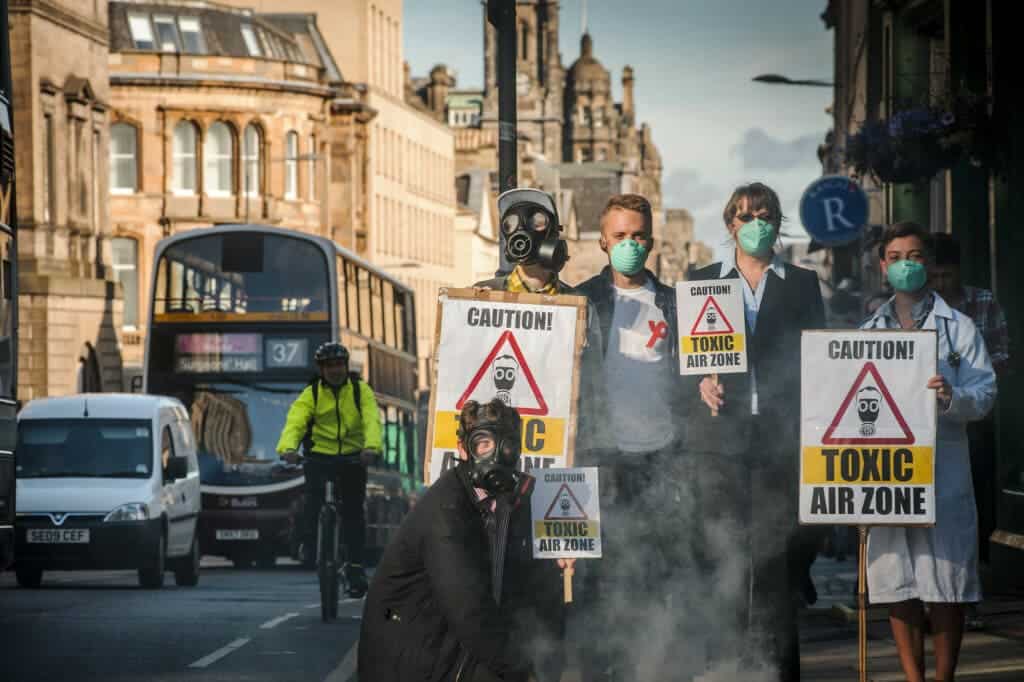If you’re living in a city, the air you breathe is almost certainly affecting your overall health. A new study found that 86% of the people living in cities worldwide (about 2.5 billion) are exposed to levels of fine particulate matter that largely exceeded the suggested guidelines from the World Health Organization (WHO). Overall, almost air pollution claims almost 2 million lives a year, a figure that may yet increase.

More than half (55%) of the world population is currently living in cities, which has massive implications in terms of human health; as urbanization continues in much of the world, the percentage is set to grow. Nevertheless, there’s been limited research comparing urban areas in terms of PM2.5 disease burden – with most studies focusing only on megacities. This is what this new study hopes to address, and the results are sobering.
In the new study, researchers estimate 61 in every 100,000 deaths in urban areas was attributable to PM2.5, a fine particulate matter with a diameter of 2.5 micrometers or less that is especially dangerous to human health due to its small size that allow it to penetrate deep in the lungs.
“The majority of the world’s urban population still live in areas with unhealthy levels of PM2.5,” Veronica Southerland, lead author of the study, said in a statement. “Avoiding the large public health burden caused by air pollution will require strategies that not only reduce emissions but also improve overall public health to reduce vulnerability.”
The risks of air pollution
Researchers from George Washington University looked at PM2.5 concentrations and associated mortality trends in over 13,000 cities globally from 2000 to 2019. PM2.5 pollutants come from many sources; primary ones, such as power plants, and secondary ones – formed when different chemicals combine and react in the air.
Average PM2.5 concentrations were consistent over the analyzed period, but with big differences by regions. Urban areas in South-East Asia had the biggest regional increases, with a 27% hike in PM2.5 concentrations. Meanwhile, South-East Asian cities also had the largest hike in PM2.5-attributable mortality rates – going from 63 to 84 deaths in 100,000 people.
The researchers also found that a decrease in PM2.5 concentrations in urban areas across the two decades (for example, in European and North American cities) didn’t match the same level of decreases in deaths. This shows that other demographic factors, such as poor overall health and aging are also big drivers of pollution-related mortality.
Asthma and air pollution
The same group of researchers simultaneously published a second study looking at nitrogen dioxide gas (NO2), an air pollutant emitted by vehicles, agriculture, and power plants. Previous studies showed NO2 can be liked to asthma exacerbation, especially in children, but without data of its long-term incidence in urban areas.
The team calculated global NO2 concentrations by combining satellite data with datasets on different types of land use, like roads, and parks. Concentrations were then applied to populations and pediatric asthma rates to calculate pediatric asthma attributable to NO2 between 2000 and 2019 in over 13,000 urban areas in the world.
The study showed that there were 1,85 million new cases of pediatric asthma associated with NO2 in 2019 – 8.5% of all new cases reported that year. Two in three cases of pediatric asthma attributable to NO2 happened in the urban areas covered by the study. NO2 caused 16% of all new pediatric asthma cases in urban areas in 2019.
The studies were published in The Lancet Planetary Health and can be accessed here and here.


